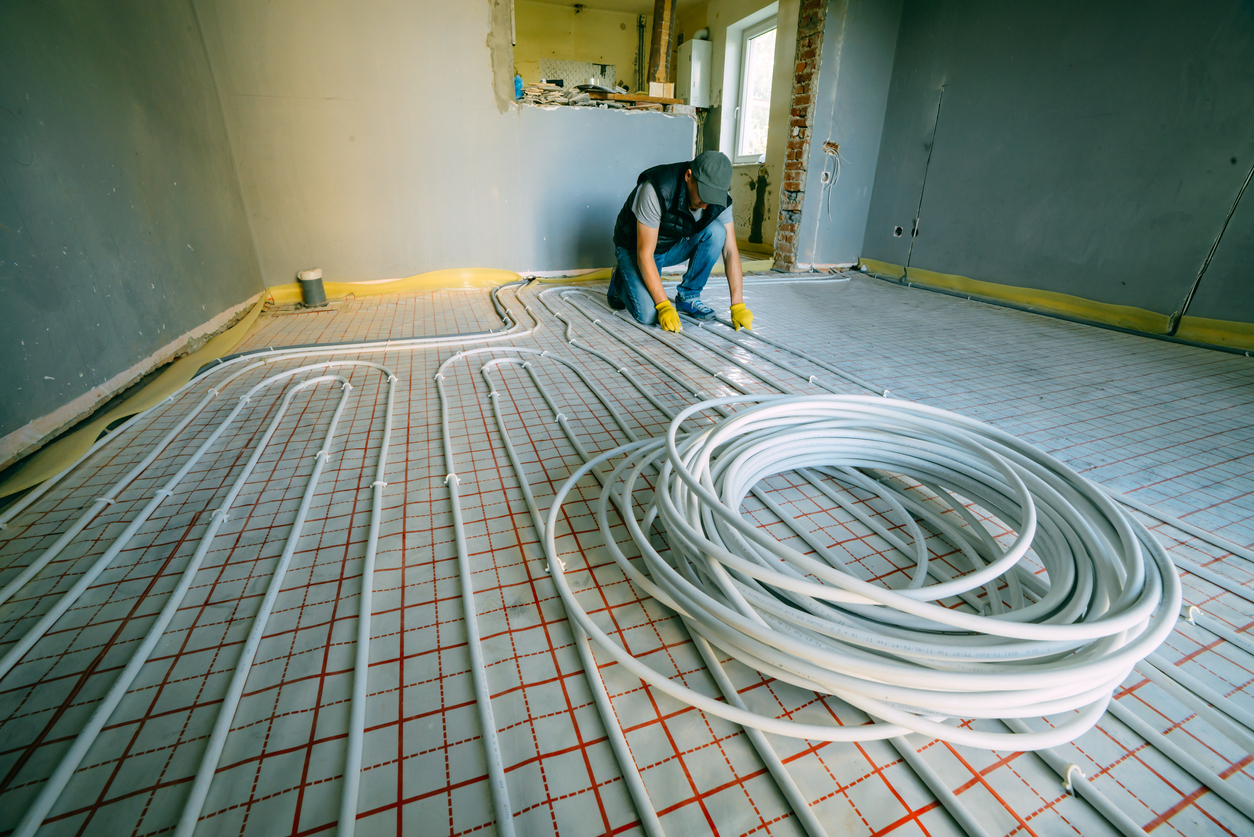When it comes to heating your home, you’ve probably heard of traditional systems like furnaces or heat pumps. But have you ever considered the idea of heating your home from the ground up? Geothermal flooring, also known as radiant floor heating, is a lesser-known but highly efficient way to keep your home cozy and comfortable. In this guide, we’ll explore what geothermal flooring is, how it works, installation processes, and the factors to consider when deciding if it’s the right choice for your home.
What Is Geothermal Flooring?
Geothermal flooring is a heating system that delivers warmth directly from the floor to your living space. It’s often compared to a giant, invisible, and silent radiator embedded beneath your floorboards.
Instead of relying on forced air or baseboard heaters, this system works by utilizing the natural thermal properties of the earth beneath your home.
How Does It Work?
At the heart of geothermal flooring is a network of pipes or tubes filled with warm water. These pipes are typically made of flexible, durable materials like PEX (cross-linked polyethylene). They are installed beneath your floor, creating a vast, continuous loop throughout the area you want to heat.
The magic begins when warm water circulates through these pipes. As the water flows, it warms the flooring material above it, such as tiles, hardwood, or concrete. This warmth gradually radiates upward, evenly distributing heat across the entire room. It’s a bit like stepping onto a heated bathroom floor on a chilly morning – but for your entire home.
Installation Process:
Installing geothermal flooring requires some planning and expertise. Here’s a simplified overview of the installation process:
Design and Layout: A professional installer will assess your home’s layout and heating needs. They’ll determine the most suitable locations for the tubing and create a detailed installation plan.
Tubing Installation: The installer will lay the tubing in a carefully designed pattern, ensuring consistent heating coverage. The tubing is secured in place using special clips or panels.
Connection to Heat Source: The tubing is connected to a heat source, which is typically a geothermal heat pump or a water heater. This heat source warms the water that circulates through the tubing.
Flooring Installation: After the tubing is in place, the flooring material of your choice is installed directly over it. This could be tile, laminate, hardwood, or any other suitable material.
Control System: A thermostat or control system is installed to regulate the temperature. This allows you to customize your comfort level easily.
Considerations for Geothermal Flooring
Before diving into a geothermal flooring project, several factors should be considered:
Initial Cost: Geothermal flooring systems can have a higher upfront cost compared to traditional heating systems. However, they often provide significant long-term energy savings.
Flooring Material: Geothermal flooring works with various flooring materials, but some, like tile or stone, conduct heat more effectively.
Energy Efficiency: Geothermal heating is highly energy-efficient, resulting in lower utility bills and reduced environmental impact.
Installation Process: Proper installation is crucial for optimal performance. It’s advisable to hire experienced professionals for the job.
Zoning: Geothermal flooring allows for zoning, so you can heat specific areas or rooms as needed, increasing comfort and energy efficiency.
Geothermal flooring is an innovative and efficient way to heat your home. By leveraging the natural heat stored beneath the earth, it provides consistent warmth and comfort while potentially saving you money on energy bills. However, it’s essential to weigh the initial investment and installation considerations to determine if geothermal flooring is the right choice for your home.
If you’re interested in exploring this heating option, consult with an experienced HVAC professional who can assess your specific needs and guide you through the process. With the right system in place, you can enjoy toasty toes and a warm home throughout the year.

